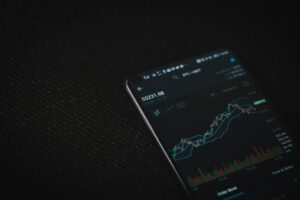Title: Top 5 Forex Volume Indicators to Use in Your Trading Strategy
Introduction
Volume is a vital component in forex trading that provides valuable insights into the strength and sustainability of market trends. By analyzing trading volume, traders can gauge market sentiment, confirm price movements, and identify potential reversals or breakouts. Utilizing volume indicators can significantly enhance your trading strategy and increase the accuracy of your trade decisions. In this article, we will discuss the top five forex volume indicators that every trader should consider incorporating into their trading strategy.
1. Volume Bars
Volume bars are the most basic and widely used volume indicator in forex trading. They represent the total number of contracts or shares traded during a specific period. By observing volume bars, traders can determine the intensity of buying and selling pressure in the market. Higher volume during an uptrend indicates strong buying interest, while higher volume during a downtrend suggests strong selling pressure.
To use volume bars effectively, traders should compare the current volume with historical volume levels. This comparison will provide valuable insights into whether the current trading activity is above or below average. Additionally, volume bars can be used in conjunction with other technical indicators to confirm price movements and identify potential trend reversals.
2. Volume Moving Average
The volume moving average is a technical indicator that calculates the average volume over a specific period. It smooths out the volume data, making it easier to identify trends and changes in volume patterns. Traders often use a simple moving average of volume, such as a 20-day or 50-day moving average, to identify significant shifts in trading activity.
When the volume moving average is rising, it suggests increasing market participation and interest. Conversely, a declining volume moving average indicates decreasing market activity and potential trend weakness. By comparing the current volume to the volume moving average, traders can identify if the current volume is above or below average, helping them make better trading decisions.
3. On-Balance Volume (OBV)
On-Balance Volume (OBV) is a popular volume indicator that measures buying and selling pressure by adding or subtracting volume based on price movements. OBV can be used to confirm price trends and identify potential trend reversals. It is calculated by adding the volume on days when the price closes higher than the previous day and subtracting the volume on days when the price closes lower.
When OBV confirms an uptrend by making higher highs and higher lows, it suggests that buying pressure is increasing. Conversely, if OBV confirms a downtrend by making lower lows and lower highs, it indicates that selling pressure is strengthening. OBV can be used as a leading indicator, providing early signals of potential trend changes before they become apparent on price charts.
4. Chaikin Money Flow (CMF)
Chaikin Money Flow (CMF) is a volume oscillator that combines price and volume to measure the flow of money into or out of a security. CMF compares the accumulation and distribution of money over a specified period, usually 20 or 21 days. It is calculated by multiplying the Money Flow Multiplier (determined by the relationship between the closing price and the day’s range) by the volume and summing up the values over the chosen period.
CMF values above zero indicate buying pressure, while values below zero suggest selling pressure. Traders can use CMF to confirm price trends, identify potential trend reversals, and spot divergences between the indicator and price. Divergences between CMF and price may indicate a weakening trend, providing traders with an opportunity to exit or reverse their positions.
5. Volume Profile
Volume Profile is a powerful volume-based indicator that displays the volume traded at each price level over a specified period. It helps traders identify significant price levels where a large number of trades have occurred. By understanding the concentration of trading activity, traders can determine areas of support and resistance, potential breakouts or reversals, and market sentiment.
Volume Profile consists of a horizontal histogram that displays the volume traded at each price level. Traders can overlay multiple Volume Profiles to identify key levels across different timeframes. This indicator is particularly useful for day traders and swing traders who want to identify areas of high liquidity and potential price reversals.
Conclusion
Incorporating volume indicators into your forex trading strategy can provide valuable insights into market sentiment, confirm price movements, and identify potential reversals or breakouts. Each of the five volume indicators discussed in this article offers unique advantages and can be used in conjunction with other technical analysis tools to enhance your trading decisions. By understanding and effectively utilizing volume indicators, traders can gain a significant edge in the forex market.





